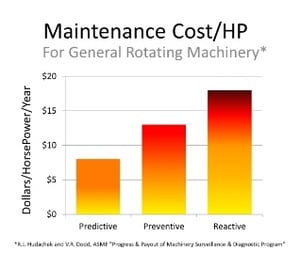The esteemed Bill Harrison, ASHRAE Presidential Member, has said that “Most buildings will lose up to 30% of their efficiency in the first three years of operation.” (Data based on Texas A&M Study)
Why? Less than optimal operations and maintenance.
It starts with the building. As explained in this video, hopefully the owner, designer and architect’s ideas of energy efficiency align. But what happens once the building is built?
You know that buildings are not “set it and forget it.” They require people. It’s the people who actively monitor the building and its operations, with, for example, a building automation system (BAS), or even better, a building energy management information system (See "Advances in BEMIS Make Being Energy Efficient Easier and Smarter"). To be truly effective, however, those people on your team need to know how to access, understand and act on the data and information collected. If they can do that, they will prevent unnecessary expenses.
How does an effective maintenance strategy increase the bottom line?
- Reduce unscheduled downtime
- Lower maintenance costs
- Cut energy and operating costs
- Improve productivity of personnel
- Avoid crisis management
 Studies show that when it comes to certain machinery, your maintenance perspective really matters. Addressing a maintenance issue, whether it’s altering a setting, making a repair or scheduling a replacement – only when something goes wrong – is known as being reactive. Reactive maintenance, which is how many facilities are run, costs approximately 25% more than following a preventive maintenance schedule, often prescribed by the manufacturer. But your costs can be cut by half – or more – if you use your available data and information to predict when issues will need to be addressed or repairs will be needed. This is known as predictive maintenance.
Studies show that when it comes to certain machinery, your maintenance perspective really matters. Addressing a maintenance issue, whether it’s altering a setting, making a repair or scheduling a replacement – only when something goes wrong – is known as being reactive. Reactive maintenance, which is how many facilities are run, costs approximately 25% more than following a preventive maintenance schedule, often prescribed by the manufacturer. But your costs can be cut by half – or more – if you use your available data and information to predict when issues will need to be addressed or repairs will be needed. This is known as predictive maintenance.
The optimal operations and maintenance strategy is a proactive (predictive) one, and one that can have a positive influence on quality assurance, operating efficiency, and life of the equipment. Those net positives translate to dollars in lower costs and higher asset value. The choice is yours.
If you think it might be time to update your equipment, and want to include BEMIS in your plans, you may be eligible for new financing. Click below to see if you qualify.




